Deep within the lush canopies of Central and South American rainforests dwells one of nature’s most formidable aerial predators—the Harpy Eagle. With its massive talons, impressive wingspan, and piercing gaze, this magnificent raptor has earned both admiration and fear throughout its range. Often shrouded in mystery and folklore, the Harpy Eagle’s imposing presence and hunting prowess have cemented its reputation as the undisputed apex predator of the jungle skies. While its fearsome appearance has spawned countless myths, the reality of this remarkable bird is equally fascinating, revealing a complex creature perfectly adapted to its rainforest domain and facing significant conservation challenges in our modern world.
The Magnificent Monarch of Rainforest Skies
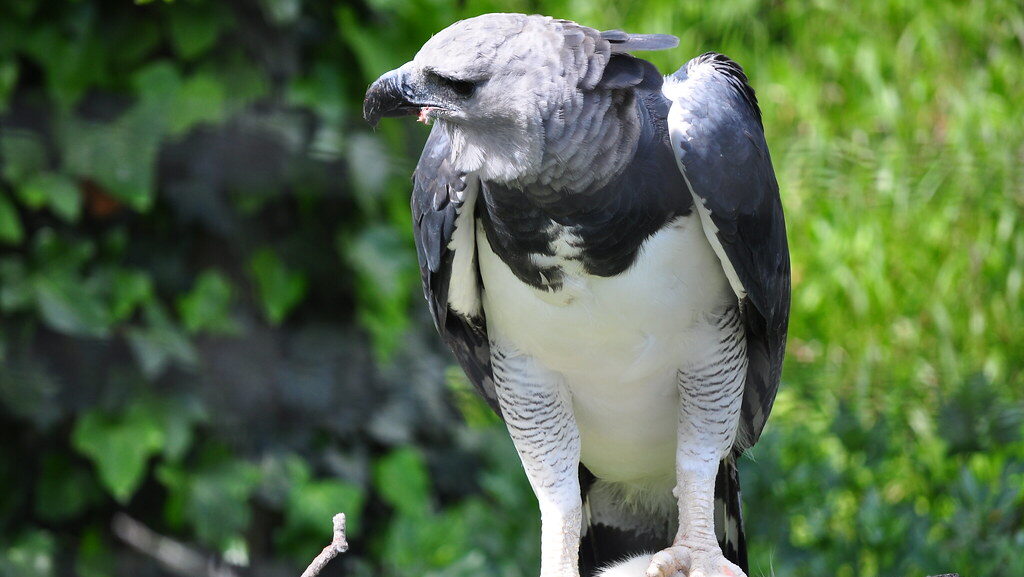
The Harpy Eagle (Harpia harpyja) stands as one of the most powerful and largest eagles in the world, dominating the rainforest canopies of Central and South America. Named after the harpies of Greek mythology—winged monsters with women’s faces and sharp claws—these birds certainly live up to their mythological namesake. They occupy a crucial ecological niche as apex predators, helping maintain the delicate balance of their forest ecosystems by controlling populations of tree-dwelling mammals. Despite their fearsome reputation, Harpy Eagles face significant threats from habitat loss and human persecution, making them increasingly rare sights throughout much of their historic range.
Physical Characteristics: Built for the Hunt
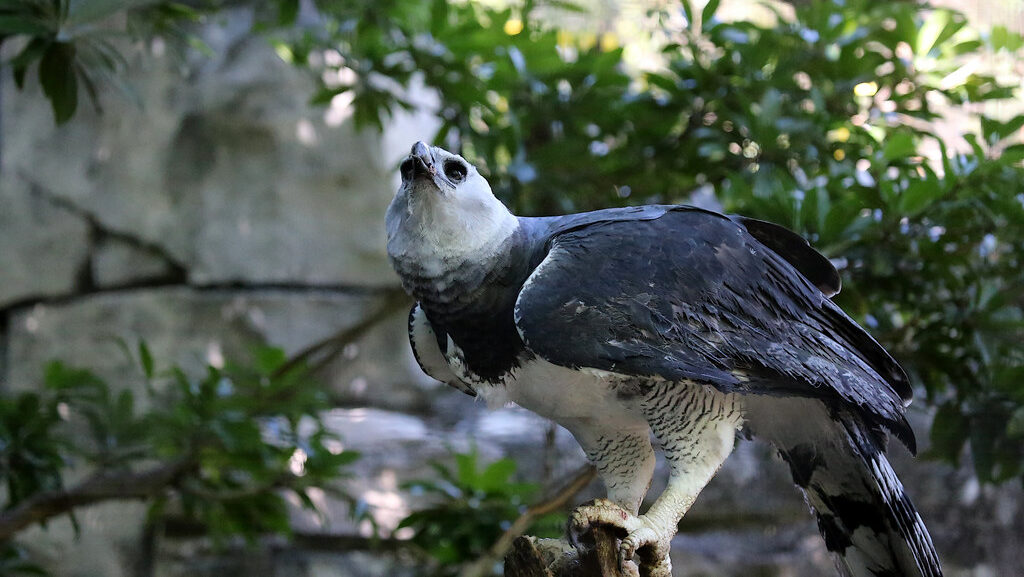
The Harpy Eagle’s physical attributes reflect its evolutionary specialization as a formidable predator of the rainforest canopy. Females, significantly larger than males, can weigh up to 20 pounds (9 kg) with a wingspan reaching 7 feet (2.1 meters), though their relatively short wings help them navigate through dense forest vegetation. Their most distinctive feature may be their massive, powerful legs and talons—the largest of any eagle species—with rear talons measuring 3-4 inches (7.6-10.2 cm) in length, comparable to a grizzly bear’s claws. Their slate-gray back contrasts with a white underside, while their expressive face features a distinctive dual-crested head that can be raised to form an intimidating display. Perhaps most striking are their piercing yellow-gray eyes, which provide exceptional vision for spotting prey moving through the dense canopy.
The Distinctive Double Crest: Nature’s Crown
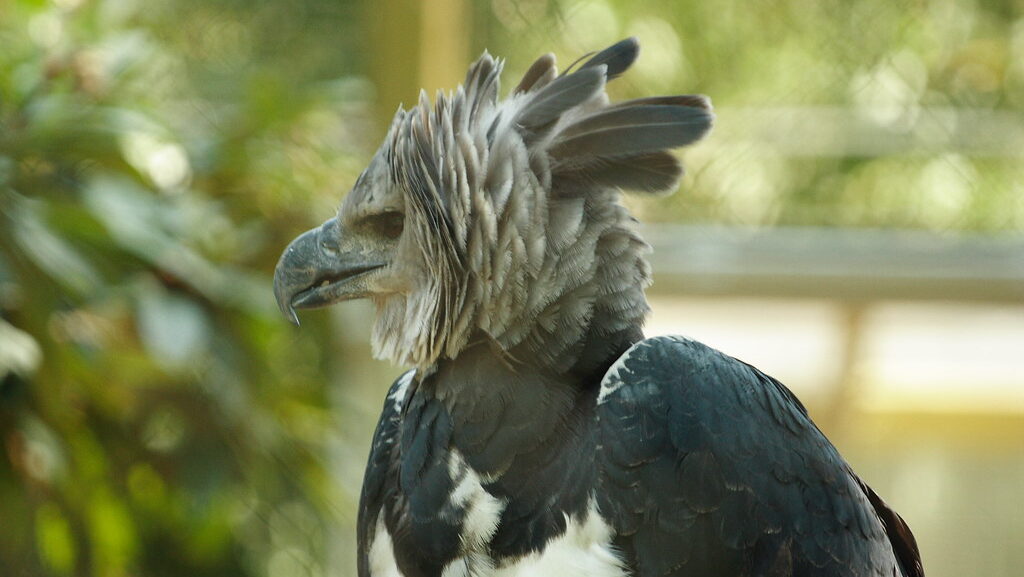
The Harpy Eagle’s most recognizable feature is undoubtedly its spectacular double crest, which consists of elongated feathers at the back of the head that can be raised or lowered according to the bird’s mood. When relaxed, these feathers lie flat, giving the eagle a sleek, streamlined appearance suited for swift flight through the forest. When excited or threatened, however, the eagle can fan these feathers outward, creating a dramatic crown-like display that significantly increases the bird’s apparent size and intimidation factor. This distinctive feature serves multiple purposes beyond mere display, potentially acting as a sound-collecting mechanism to enhance the eagle’s already impressive hearing capabilities. Indigenous peoples throughout the eagle’s range have long admired this majestic crest, incorporating its design into traditional headdresses and ceremonial regalia as a symbol of power and connection to the natural world.
Hunting Prowess: The Silent Assassin
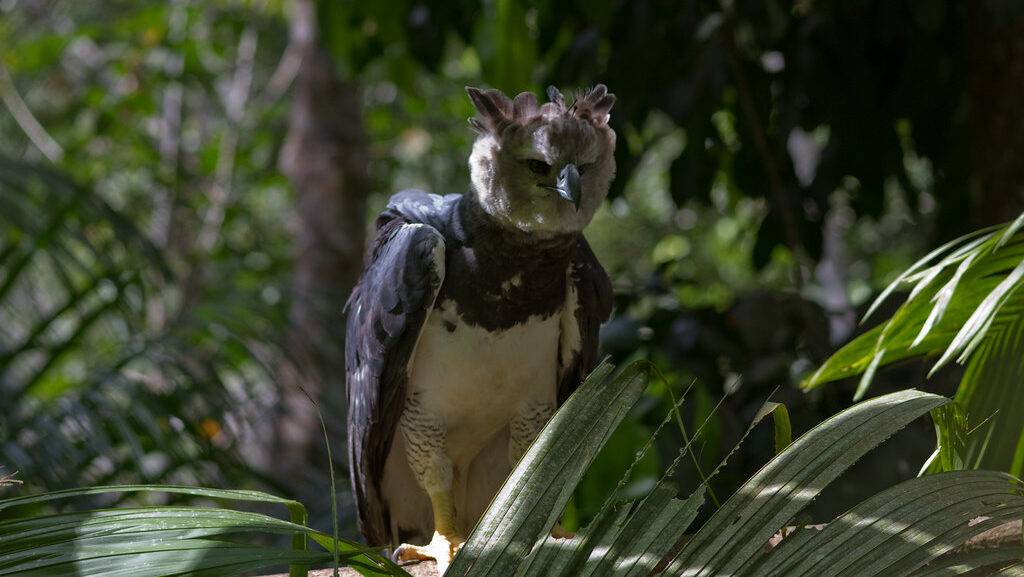
Harpy Eagles have perfected the art of ambush hunting, combining patience, power, and precision in their feeding strategy. Unlike eagles that soar high overhead scanning for prey, Harpies perch motionless for hours, using their exceptional vision to detect the slightest movements in the canopy before launching into explosive action. Their hunting technique typically involves a swift, direct attack, with the eagle capable of reaching speeds up to 50 mph (80 km/h) in short bursts through the forest. When striking prey, they deliver tremendous force through their powerful talons, which can exert hundreds of pounds of pressure per square inch—enough to instantly crush the skull or spine of even large monkeys. Most remarkably, these eagles can carry prey equal to their own body weight, allowing them to transport animals weighing up to 17 pounds (7.7 kg) through the air to feeding perches or back to their nests.
Preferred Prey: Masters of the Canopy
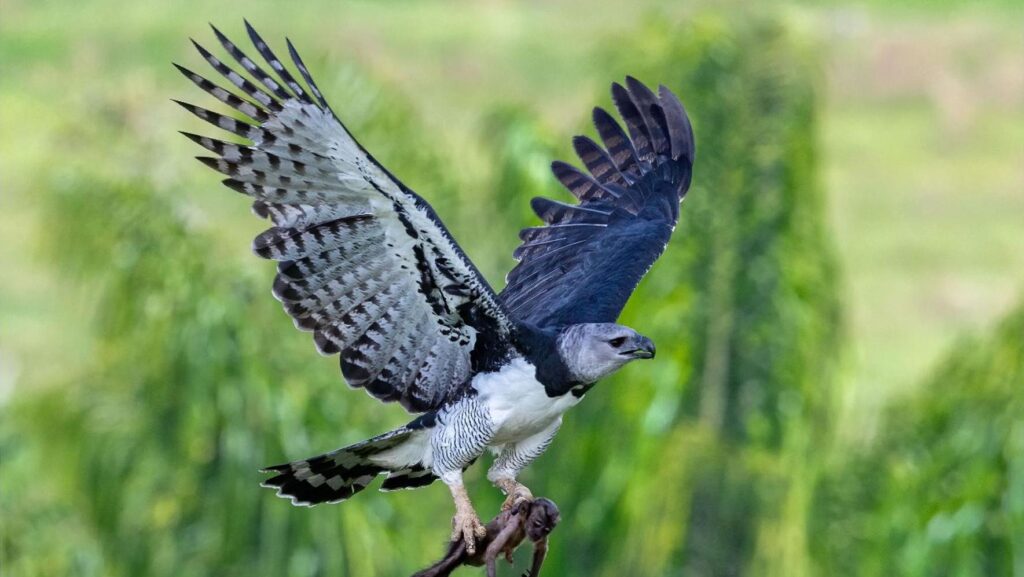
The Harpy Eagle’s diet consists primarily of tree-dwelling mammals that share its canopy habitat, with sloths and monkeys forming the cornerstone of their feeding strategy. Studies of their prey remains reveal a particular preference for two-toed and three-toed sloths, which may constitute over 70% of their diet in some regions—a logical specialization given the sloths’ vulnerable nature and substantial meat yield. Various monkey species, including howler, capuchin, and spider monkeys, make up much of the remainder of their typical diet, though the eagles are opportunistic and will readily take other prey. Smaller targets include large birds such as macaws and curassows, reptiles like iguanas, and even the occasional porcupine or coati when more preferred prey is scarce. Their hunting territory can span over 25 square miles (65 square km), allowing them to systematically patrol vast stretches of rainforest in search of their next meal.
Reproduction and Family Life: Devoted Parents

Harpy Eagles form monogamous pairs that may mate for life, establishing enduring bonds that strengthen with each breeding cycle. Their reproductive rate is exceptionally slow, with pairs typically producing only one chick every 2-3 years—one of the lowest reproduction rates among birds of prey. The nesting process begins with the construction of massive nests, often exceeding 6 feet (1.8 meters) in width and depth, built high in emergent canopy trees with commanding views of the surrounding forest. The female typically lays two eggs, though usually only one chick survives due to a phenomenon called obligate siblicide, where the stronger hatchling kills or outcompetes its sibling. The remaining chick receives extraordinary parental care, with both parents participating in feeding and protection duties for up to 10 months—one of the longest dependency periods of any bird species. This extensive parental investment reflects the eagle’s complex hunting skills, which require significant time to develop fully.
Cultural Significance: Reverence and Fear

Throughout their range, Harpy Eagles have figured prominently in indigenous cultures, often taking on symbolic importance that transcends their biological role. Many Amazonian tribes consider the Harpy a spiritual entity, associating it with powerful shamanic forces and incorporating its imagery into ceremonial masks and body art. In Panama, national pride in the Harpy Eagle led to its designation as the country’s national bird, with its image appearing on currency and official emblems. However, not all cultural perceptions have been positive—in some regions, superstitions persist that Harpies will attack humans or carry off children, misconceptions that have unfortunately led to persecution. These mixed cultural attitudes reflect humanity’s complex relationship with apex predators: a combination of awe, respect, and primordial fear that continues to influence conservation efforts for these magnificent birds.
Habitat and Distribution: Lords of the Canopy
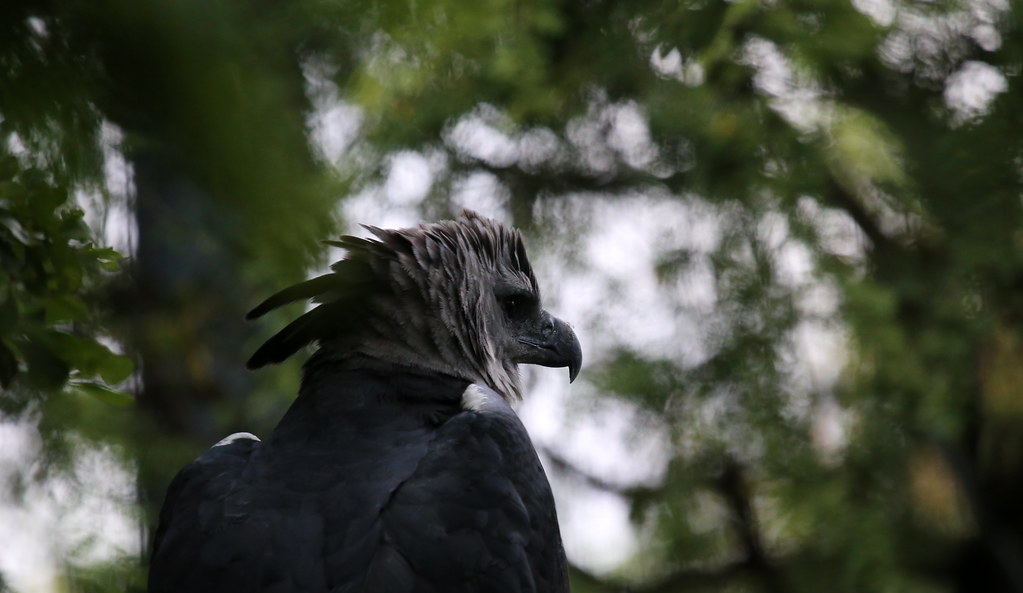
Harpy Eagles are primarily associated with pristine, lowland tropical rainforests, where tall emergent trees provide both hunting perches and nesting sites. Their historic range once extended from southern Mexico through Central America and into South America as far south as northern Argentina, encompassing vast stretches of the Amazon Basin. Today, their distribution has contracted significantly, with the most viable populations remaining in the remote rainforests of Brazil, Guyana, Venezuela, and Peru. The eagles require large, uninterrupted tracts of primary forest, as their hunting strategy and low population density make them particularly vulnerable to habitat fragmentation. Each breeding pair maintains an extensive territory of roughly 25-40 square miles (65-100 square km), highlighting their need for vast wilderness areas to support even modest population numbers. Their preference for undisturbed forest interiors makes them excellent indicator species, as their presence typically signals a healthy, functioning ecosystem.
Conservation Status: A Vulnerable Icon

The Harpy Eagle faces mounting conservation challenges across its range, earning it a “Near Threatened” classification on the IUCN Red List, though many regional populations are considered critically endangered. Deforestation presents the most significant threat, with logging, agriculture, and infrastructure development steadily eroding the pristine forest habitat these birds require for hunting and breeding. Their naturally low population density and slow reproductive rate compound these threats, as each breeding pair lost represents a significant blow to local populations. Direct persecution also continues in some areas, where the eagles are occasionally shot by farmers fearing for livestock or by those influenced by misconceptions about the bird’s danger to humans. Conservation efforts have increased in recent decades, including captive breeding programs, reintroduction initiatives, and the establishment of protected areas specifically designed to encompass Harpy Eagle territories in countries like Panama, Brazil, and Ecuador.
Scientific Research: Unlocking Harpy Mysteries

Scientific understanding of Harpy Eagles has increased dramatically in recent decades, though their remote habitat and elusive nature continue to challenge researchers. Technological advances, particularly in satellite telemetry, have revolutionized our knowledge of their movements, with tagged eagles revealing previously unknown details about territory size, hunting patterns, and seasonal behaviors. Camera trap networks throughout the Amazon have provided unprecedented glimpses into their natural behaviors, capturing rare footage of hunting techniques and parent-offspring interactions that were previously only theorized. One fascinating area of current research focuses on the eagle’s role as an ecosystem engineer, with preliminary studies suggesting that their predation on seed-dispersing mammals may influence forest composition and regeneration patterns over time. Despite these advances, many aspects of Harpy biology remain poorly understood, including their population genetics, communication systems, and the full extent of their cognitive abilities.
Myths and Misconceptions: Separating Fact from Fiction
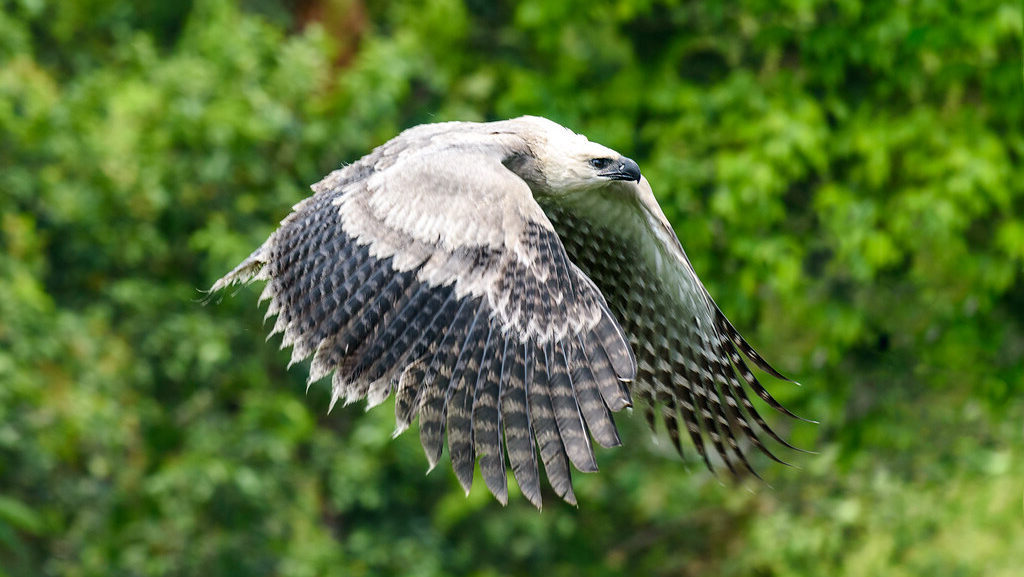
The Harpy Eagle’s imposing appearance has spawned numerous myths and misconceptions that continue to influence public perception of these birds. Perhaps the most persistent myth is that they prey on humans, particularly children—a falsehood that has led to persecution in some regions despite zero confirmed cases of unprovoked attacks on people. Another common misconception involves their size, with exaggerated accounts sometimes describing them as having 10-foot wingspans or weighing as much as a small child, claims that far exceed their actual (though still impressive) dimensions. Some local legends attribute supernatural powers to the birds, including the ability to control weather or bring misfortune to those who disturb their nests. While these beliefs may seem harmless, they can interfere with conservation efforts by fostering fear rather than appreciation for these remarkable predators. Educational programs throughout the eagle’s range now work actively to dispel these myths while promoting accurate understanding of the Harpy’s ecological importance.
Adaptations for Survival: Evolutionary Perfection
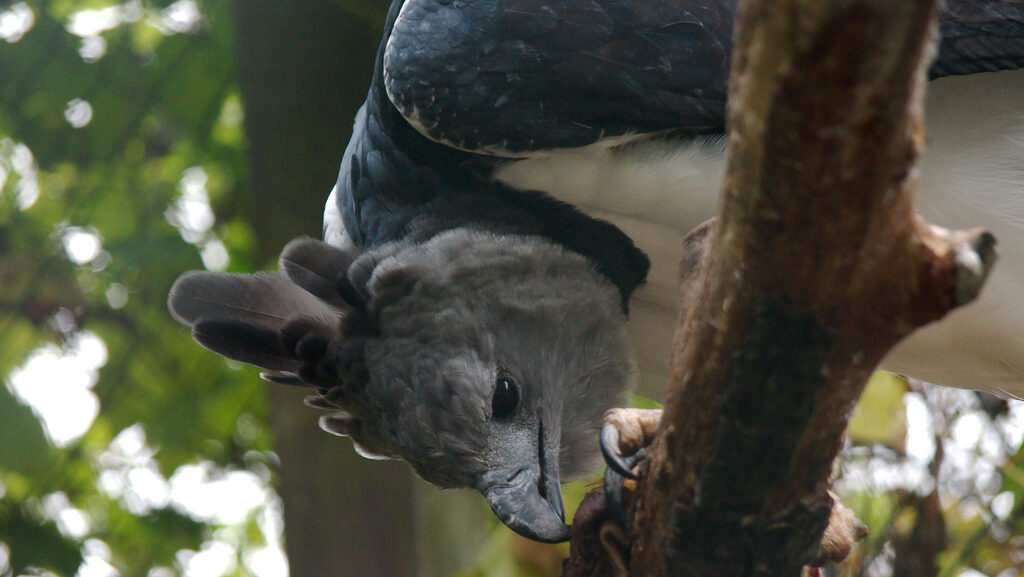
Millions of years of evolution have fine-tuned the Harpy Eagle into a specialized hunting machine with remarkable adaptations for its rainforest niche. Their relatively short, broad wings provide the maneuverability needed to navigate through dense forest vegetation, while powerful breast and shoulder muscles enable explosive bursts of acceleration when pursuing prey. Their vision is estimated to be eight times more powerful than human eyesight, allowing them to spot small movements from considerable distances even in the dappled light of the forest canopy. Perhaps their most specialized adaptation is their unique foot morphology, with extraordinarily long, curved talons and muscular legs that can exert tremendous gripping force—the rear talon alone can exert pressure exceeding 530 pounds per square inch. Even their facial structure serves a purpose: the distinctive facial disc helps funnel sounds to their ears, enhancing their ability to locate prey by sound alone when visual detection is compromised by dense foliage.
Conservation Success Stories: Hope for the Future
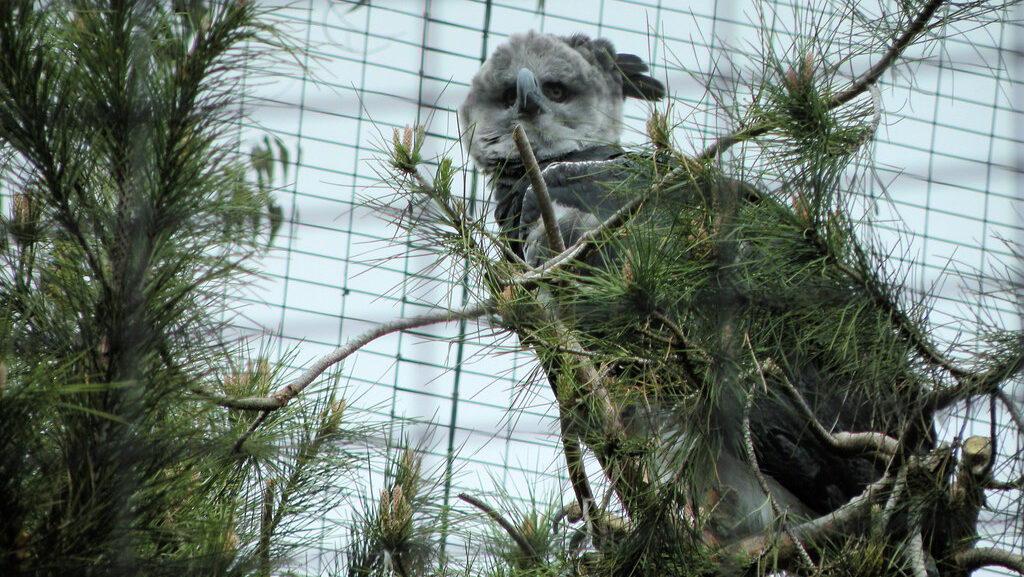
Despite the challenges facing Harpy Eagle populations, several conservation initiatives offer hope for their future survival. The Peregrine Fund’s Harpy Eagle Conservation Program in Panama has achieved notable success through captive breeding and reintroduction efforts, releasing over 40 eagles back into the wild and helping establish new breeding territories in areas where the species had been extirpated. In Brazil, the creation of the Central Amazon Conservation Complex—a UNESCO World Heritage site encompassing over 6 million hectares—provides critical protected habitat for one of the strongest remaining Harpy populations. Community-based conservation programs have proven particularly effective, with initiatives in countries like Ecuador and Guyana training local guides and creating economic incentives for protecting eagle territories through ecotourism. Perhaps most encouraging is the growing recognition of Harpy Eagles as flagship species, whose protection can drive broader conservation efforts benefiting entire forest ecosystems and the countless species that share their rainforest home.
Conclusion

The Harpy Eagle stands as one of nature’s most perfect expressions of power and adaptation, a living embodiment of the rainforest’s wild majesty. Despite its fearsome reputation, this remarkable bird represents not a monster but a masterpiece of evolution—a specialized predator playing a vital role in maintaining the health and balance of some of Earth’s most biodiverse ecosystems. As we continue to learn more about these magnificent birds, the awe they inspire offers perhaps our best hope for their conservation. By transforming fear into fascination and myths into understanding, we may yet ensure that future generations will look skyward in the rainforest and glimpse the unmistakable silhouette of the jungle’s greatest aerial predator, still reigning over its verdant kingdom.
